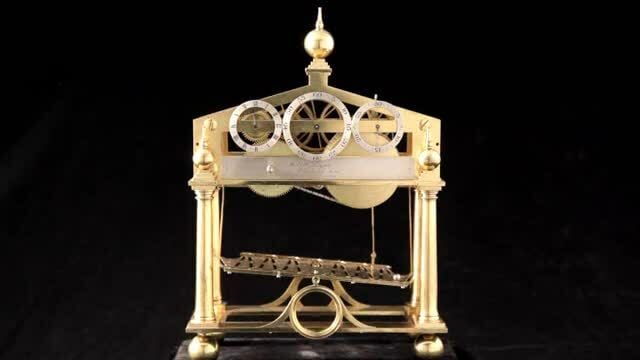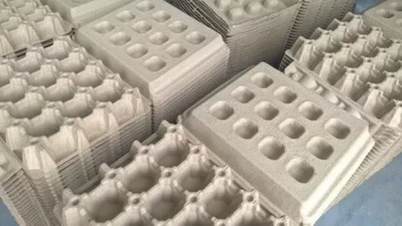Unlike the pendulum clocks popular 200 years ago, inventor William Congreve's clock measured time by the movement of a small ball.
How a rolling ball clock works. Video : Vimeo
In the early 19th century, most clocks measured time through the regular swing of a pendulum. However, the English inventor William Congreve (1772-1828) created an unusual clock that measured time using a small ball.
Congreve ball clocks have a plate engraved with zigzag lines. A small copper ball rolls down the zigzag groove and the slope of the plate. At the end of the groove, the ball hits a lever and a spring lifts this end of the plate, reversing the slope and pushing the ball back. The lever also moves the clock hands forward by the amount of time the ball has been on the track. In most versions, this is 15 seconds, but in some larger clocks, this can be as long as a minute.
Although Congreve is often credited with inventing the ball clock, his design was not the first. French inventor Nicolas Grollier de Servière and German clockmaker Johann Sayller had already built such clocks in the 17th century.
Some people believe that Congreve was unaware of the existence of these designs, but according to Mark Frank, who runs a website about antique clocks, Congreve may have taken some of the details from Johann Sayller’s clock, especially since both designs used zigzag lines (Grollier’s ball clock used straight lines). Another difference is that Sayller’s design used multiple balls and a fixed flat plate, rather than Congreve’s single ball and tilted plate.
The accuracy of a ball clock is highly susceptible to external factors. Setting the clock requires extreme precision. In 1837, the staff who were responsible for keeping time with a ball clock at Buckingham Palace described it as the most complicated and intricate machine.
Darren Cox, technology conservator at National Museums Scotland, also wrestled with a clock for two months. “The clock and the tilt plate (front and back) need to be perfectly balanced. I found that, even with the makeshift cover I made to keep the dust out, the metal ball still needed to be polished at least every two weeks to remove debris,” he explains.
“However, the biggest task to get the clock working is to adjust all the previously warped and twisted levers and plates. Even the slightest error will cause the ball to stop rolling, and if it doesn't roll fast enough, it won't be able to start the chain reaction and lift the tilted plate,” he added.
Dust is also a huge problem. The time it takes for a ball to roll downhill varies greatly depending on how clean the grooves and the ball are. In addition, metal expands and contracts as the temperature increases and decreases, changing the length of the grooves and the size of the ball. Darren Cox found that ball clocks can be off by as much as 45 minutes a day. But while they are not reliable timekeeping devices, they are beautiful and interesting to look at.
Thu Thao (According to Amusing Planet )
Source link





![[Photo] General Secretary To Lam receives US Ambassador to Vietnam Marc Knapper](https://vphoto.vietnam.vn/thumb/1200x675/vietnam/resource/IMAGE/2025/9/29/c8fd0761aa184da7814aee57d87c49b3)
![[Photo] Many streets in Hanoi were flooded due to the effects of storm Bualoi](https://vphoto.vietnam.vn/thumb/1200x675/vietnam/resource/IMAGE/2025/9/29/18b658aa0fa2495c927ade4bbe0096df)
![[Photo] General Secretary To Lam attends the ceremony to celebrate the 80th anniversary of the post and telecommunications sector and the 66th anniversary of the science and technology sector.](https://vphoto.vietnam.vn/thumb/1200x675/vietnam/resource/IMAGE/2025/9/29/8e86b39b8fe44121a2b14a031f4cef46)
![[Photo] General Secretary To Lam, Secretary of the Central Military Commission attends the 12th Party Congress of the Army](https://vphoto.vietnam.vn/thumb/1200x675/vietnam/resource/IMAGE/2025/9/30/9b63aaa37ddb472ead84e3870a8ae825)



























![[Photo] National Assembly Chairman Tran Thanh Man chairs the 8th Conference of full-time National Assembly deputies](https://vphoto.vietnam.vn/thumb/1200x675/vietnam/resource/IMAGE/2025/9/29/2c21459bc38d44ffaacd679ab9a0477c)
































































Comment (0)